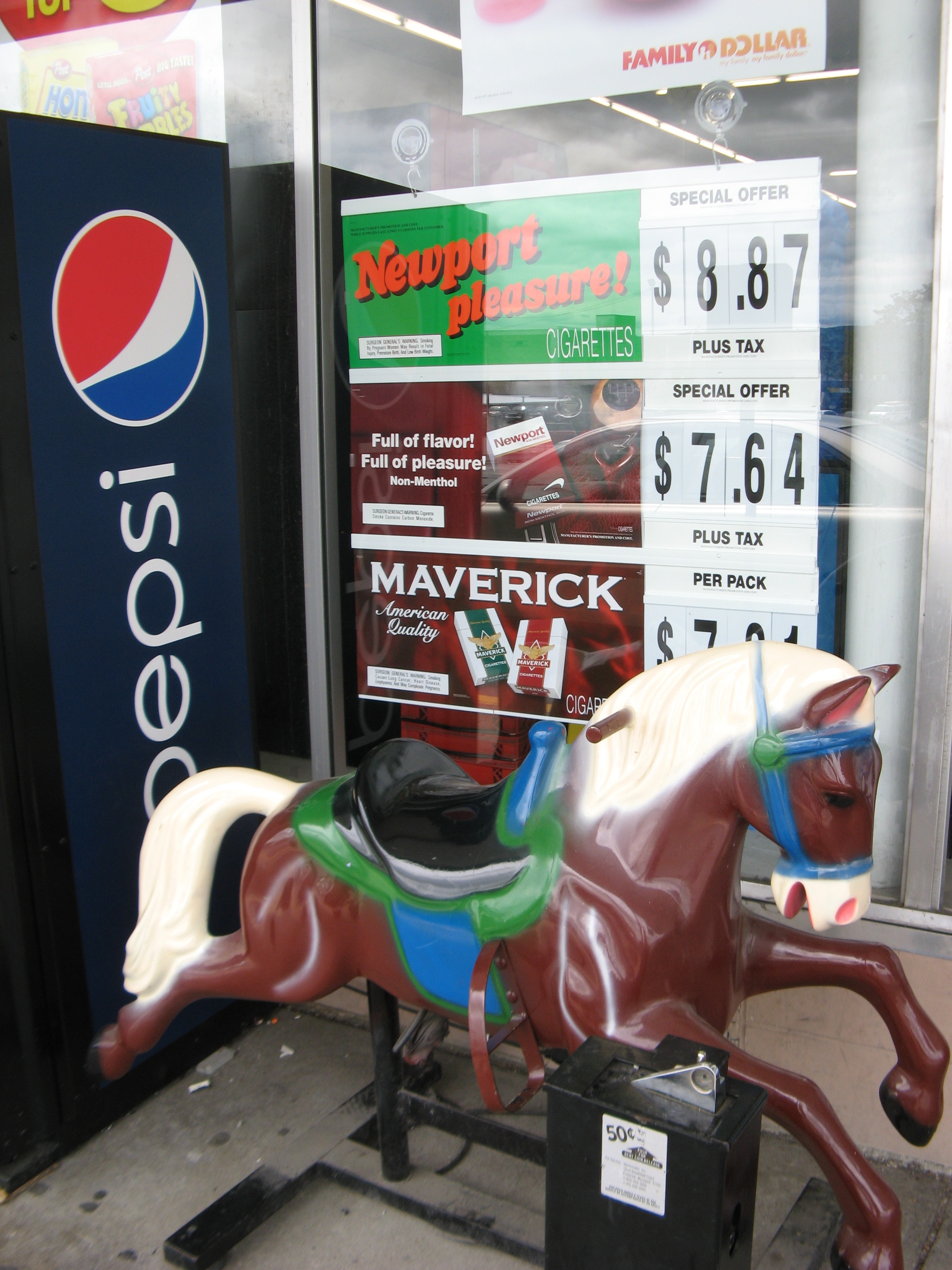Evidence Summaries and Reports
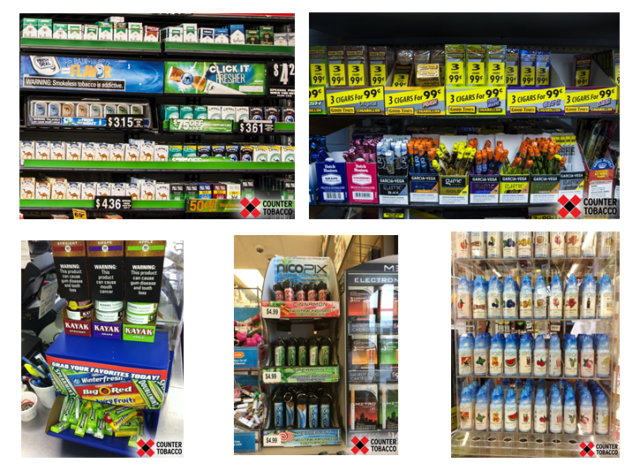
Flavored Tobacco Products
An overview of the types of flavored commercial tobacco products available today (including menthol), how they are marketed in ways that appeal to youth and to the African-American community, the association between flavors and youth initiation of tobacco product use, an overview of current local, state, and federal policy restrictions on flavors.
Menthol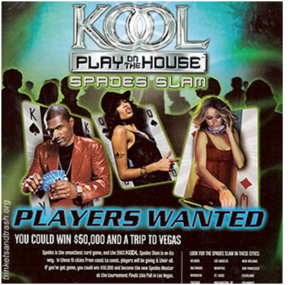
Menthol cigarettes are highly addictive and excluded from many flavor-focused policies. Many localities are beginning to create policies restricting access to menthol tobacco products hoping to combat the tobacco industry’s targeted marketing towards youth, African-Americans, and others. Learn more about the use of menthol in commercial tobacco products, the history of menthol product marketing, and policies to help reduce the use of menthol tobacco products.
E-Cigarettes at the Point of Sale

Electronic cigarettes have seen a recent surge in popularity, especially among teens. In the absence of FDA regulation on these evolving products, states and localities have begun implementing their own restrictions. Learn about possibilities for regulation and how the tobacco industry employs many of the same tactics to market e-cigarettes as they do to market other commercial tobacco products.
Hookah at the Point of Sale
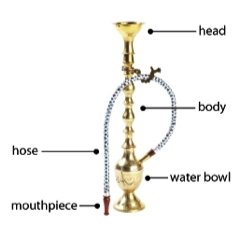 Studies suggest that young adults who would otherwise not use commercial tobacco are becoming attracted to smoking hookah and visiting hookah establishments.[8] This same population may also not associate their hookah use with tobacco use and therefore may not be receptive to current anti-tobacco messaging.[8] For this reason, it is of critical importance to analyze and evaluate the point-of-sale and point-of-consumption marketing strategies used by hookah establishments and the hookah tobacco industry, as well as the various other ways in which youth are enticed into smoking hookah. Understanding this landscape can help direct and motivate policy change. The report covers general trends in hookah use among youth and adults; federal, state, and local policies that govern hookah retail sales; as well as additional point-of-sale policies that could be implemented to reduce youth access to and use of hookah tobacco.
Studies suggest that young adults who would otherwise not use commercial tobacco are becoming attracted to smoking hookah and visiting hookah establishments.[8] This same population may also not associate their hookah use with tobacco use and therefore may not be receptive to current anti-tobacco messaging.[8] For this reason, it is of critical importance to analyze and evaluate the point-of-sale and point-of-consumption marketing strategies used by hookah establishments and the hookah tobacco industry, as well as the various other ways in which youth are enticed into smoking hookah. Understanding this landscape can help direct and motivate policy change. The report covers general trends in hookah use among youth and adults; federal, state, and local policies that govern hookah retail sales; as well as additional point-of-sale policies that could be implemented to reduce youth access to and use of hookah tobacco.
Heated Tobacco Products at the Point of Sale
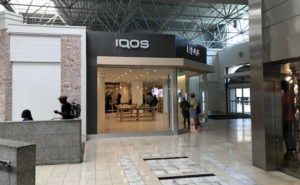 According to the CDC, “heated tobacco products heat processed tobacco leaf, allowing users to inhale nicotine into their lungs.” They are sometimes also called “heat-not-burn” products and vary in design. The most well-known heated tobacco product in the United States is Philip Morris International’s iQOS, authorized for sale through Altria in the U.S. by the FDA in 2019. This evidence summary covers heated tobacco product marketing and regulation at the point of sale.
According to the CDC, “heated tobacco products heat processed tobacco leaf, allowing users to inhale nicotine into their lungs.” They are sometimes also called “heat-not-burn” products and vary in design. The most well-known heated tobacco product in the United States is Philip Morris International’s iQOS, authorized for sale through Altria in the U.S. by the FDA in 2019. This evidence summary covers heated tobacco product marketing and regulation at the point of sale.
Disparities in Point-of-Sale Advertising and Retailer Density
Tobacco companies have been disproportionately targeting minority communities for decades. While smoking rates have declined overall since 1964, higher rates still exist among African-American, Latinx, low-income, and LGBT populations. Learn more about the tactics the commercial tobacco industry has used to target these groups and how tobacco-related disparities persist through targeting in the retail environment and disparities in density of retailers in specific communities.
Native Americans & POS
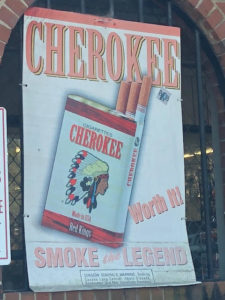
Working with Native American communities around tobacco and point of sale takes cultural awareness and knowledge of the historical and ritual uses of traditional tobacco in some tribes. Learn more about the traditional uses of tobacco and navigating the targeted marketing of the commercial tobacco industry.
LGBTQ+ Targeting & POS

Targeted marketing of tobacco products to the LGBTQ+ community has been going on for decades through various methods, including advertising in gay press publications, participating in advocacy efforts for LGBTQ+ communities, and using strategic ad campaigns to appeal to LGBTQ+ consumers. Learn more about LGBTQ+ tobacco use and navigating the targeted marketing of the commercial tobacco industry.
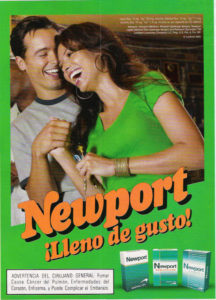
Latinx & POS in the US
Data on smoking rates in Latinx communities vary based on a number of factors that include race and economic status. Learn more about Latinx commercial tobacco use and navigating the targeted marketing of the tobacco industry.
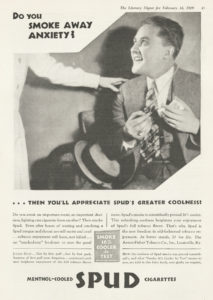
Understanding the Intersections of Mental Health and the Tobacco Retail Environment
The purpose of this report is to highlight variables that are predictive or associated with high rates of tobacco use among people with mental illness, including how the retail environment functions as one such variable.
Rural Tobacco Disparities at the Point of Sale
 In 2016, prevalence of cigarette smoking was higher among adults living in rural areas in the US (28.5%) compared to adults living in urban areas (25.1%). While cultural and economic factors play some role in this variance, many of these inequities stem from the targeted tactics used by the tobacco industry to make tobacco products highly visible, desirable, and cheap for individuals living in rural areas across the United States. This report explores these disparities and the point-of-sale tobacco control policies that may help reduce tobacco-related inequities across rural/urban lines.
In 2016, prevalence of cigarette smoking was higher among adults living in rural areas in the US (28.5%) compared to adults living in urban areas (25.1%). While cultural and economic factors play some role in this variance, many of these inequities stem from the targeted tactics used by the tobacco industry to make tobacco products highly visible, desirable, and cheap for individuals living in rural areas across the United States. This report explores these disparities and the point-of-sale tobacco control policies that may help reduce tobacco-related inequities across rural/urban lines.
Health Equity and Point-of-Sale Tobacco Control Policy
The US has steadily expanded tobacco protections since 1964 – with less smoke in the air and fewer advertisements for harmful products as a result. In 2011, 18.9% of young adults ages 18-24 smoked cigarettes, but national data shows a 21% decline in smoking for this population, with use down to 10% in 2017.[1] However, as the prevalence of smoking declines overall, not all populations are equally protected, and as a result, certain subpopulations bear a burden of higher disease and death outcomes as a result of tobacco use and exposure to smoking. As tobacco control continues to advance, communities are thinking about the health equity impact of tobacco policy at the POS. This report highlights some policy examples or ways of structuring tobacco policies at the POS to improve health equity.

Deadly Alliance Report
This report by the Campaign for Tobacco-Free Kids, the American Heart Association and Counter Tobacco details how the tobacco industry uses the retail environment to market their deadly products and fight policies that limit tobacco use.
Healthy Retail
 In this evidence summary, we examine how communities are working together to create healthy retail environments for all using similar tactics across tobacco, alcohol, and food, as well as finding ways to address how these products are sold and marketed in stores simultaneously. It is not intended to be an exhaustive report, but to provide an overview of how similar tactics are being used across products at the point of sale and to highlight how thinking about the retail environment as a whole can benefit the health of our communities.
In this evidence summary, we examine how communities are working together to create healthy retail environments for all using similar tactics across tobacco, alcohol, and food, as well as finding ways to address how these products are sold and marketed in stores simultaneously. It is not intended to be an exhaustive report, but to provide an overview of how similar tactics are being used across products at the point of sale and to highlight how thinking about the retail environment as a whole can benefit the health of our communities.
POS Report to the Nation

Developed by researchers from the Center for Public Health Systems Science at Washington University in St. Louis, Stanford Prevention Research Center and the University of North Carolina Gillings School of Global Public Health, this report reveals the current status of the US retail environment for tobacco, including what policy activities are being pursued around the nation. It includes next steps and resources to enact new POS policies.
Rebutting Economic Arguments Against POS
All the fuel you need to counter arguments from tobacco industry proponents. Think POS tobacco control policies hurt retailers like convenience stores? Think again. Here’s the research to prove it.
Youth Targeting at the Point of Sale
Despite governmental efforts to protect youth from tobacco advertising, the tobacco industry continues to use tactics to appeal to youth. Research indicates that nearly all adult smokers first try cigarettes before age 18, so it’s no surprise that youth are an important target of the tobacco industry. Learn more about their marketing tactics at the point of sale that target youth. The examples of executives targeting youths are numerous. In a 1998 RJ Reynolds memo titled, “The Importance of Younger Adults,” an executive outlined the need to retain young smokers. “Younger adults are the only source of replacement smokers,” he wrote.

Stores near Schools
Where do kids today see tobacco advertising? Read how the tobacco industry uses stores near schools to target young adults as “replacement smokers,” and learn about how bans on POS advertising near schools can help counter this influence.
Non-Cigarette Tobacco Products and POS Policies
Cigarettes aren’t the only harmful tobacco product on the market. Learn how cigars, little cigars, cigarillos, smokeless tobacco, dissolvables, e-cigarettes, and other commercial tobacco products have grown in popularity with increased regulation of traditional cigarettes and what the POS policy opportunities are to regulate them.
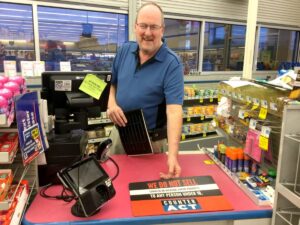 Merchant education programs help to ensure that retailers are able and motivated to comply with the law. Education and outreach are labor- and resource-intensive, and communities will vary in their ability to implement such efforts. An effective education and outreach program can simultaneously improve compliance, benefit community relations, and promote buy-in for public health policies.
Merchant education programs help to ensure that retailers are able and motivated to comply with the law. Education and outreach are labor- and resource-intensive, and communities will vary in their ability to implement such efforts. An effective education and outreach program can simultaneously improve compliance, benefit community relations, and promote buy-in for public health policies.
Evaluating POS Tobacco Control Policies
Policy evaluation is an important tool for demonstrating the value and potential challenges of a policy by measuring its ability to result in the intended impact. In addition, policy evaluation helps to assess support for, enforcement of, and compliance with implemented policies and identify potential gaps, deficiencies, or unintended impacts. All of this information is key to informing the evidence for future policy or any modifications needed for existing policies.


